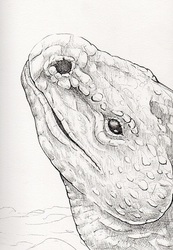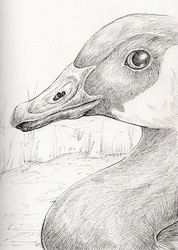Sign In
CloseTotem of the day is Lark! If you have been reaching for answers, it is the time to look within yourself rather than depending on others. Allow yourself to break out into song or even whistling as you work to brighten up your day and mood. It may aid you to spend time out in nature in order to let the spirits bring your song to you. Be sure to watch how you are communication, for words will have a greater impact in the coming time. However, the coming days also speak of happiness and joy when Lark appears. the Lark spirit guide is known for it's connection to song, happiness, messages, abundance, and fidelity. When Lark appears, it is a sign of coming love and light in your life. Use this guidance to bring song and love to those around you, particularly those you are wedded to. They are seen by the Lakota/Dakota tribes as messengers of the god Itokaga which is a representation of the south wind. This connection to the South includes being a bringing of life, light, and warmth. However, Larks also possess a crescent shape on their chests which connects them with lunar energies as well. This connotation means that Larks are also signs to look within oneself for self-discovery. Singing can often be a journey of expressing our inner self and so is urged on by the guidance of the Lark. People who connect with Lark have an amazing skill with both spoken and sung words. These individuals often possess a feeling of mystery about them, yet also contain a personality full of joy and happiness. They can often be found singing or telling stories whenever possible and are usually enjoyable to listen to in either skill.
Larks, Alaudidae, are small birds that belong to the group called Passerine. Passerines, also called songbirds or perching birds, include over half of all bird species and are identified by the anatomy of their toes with three toes pointing forward and one back. This arrangement of toes enables easier perching. Larks are known as Old world birds, occurring primarily throughout Europe, Asia, and Africa. They can also be found in northern and eastern Australia, however only one species, the Horned Lark, is found in North America. No matter their location, Larks are seen to prefer dryer habitats. Uniquely, Larks possess multiple scutes, thick bony plates, over the back of their feet rather than the single plate found in most songbirds. On average, an adult Lark will grow to up to 9 inches in length and weigh just over 2 oz. In general, species of Larks possess feathers in shades of patterned brown with bold black or white markings. This allows them to camouflage easier when foraging on the ground or incubating eggs in a nest. The diet of a Lark consists of a combination of seeds and insects. Larks are well known for their musical abilities. They have more complex songs than most species of birds and often pair these elaborate songs with flight. Males will use these musical flights to attract mates and defend their territory. When breeding, nests are often built hidden on the ground. These nests are built in cups of dead grass, however, some Larks will create more complex nests with domes. Species found in desert habitats often nest low in bushes which is theorized to allow cooling breezes to reach the nest. A female will lay between 2 and 6 eggs depending on the specie's location. These eggs will be incubated for 11 to 16 days before hatching. Another unique feature of Larks includes the habit of being the only passerines who lose all their feathers during their first moult. On average, Larks will live between 2 and 5 years of age.
Submission Information
- Views:
- 417
- Comments:
- 0
- Favorites:
- 3
- Rating:
- General
- Category:
- Visual / Traditional




